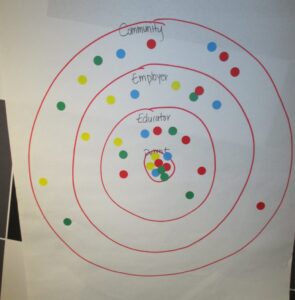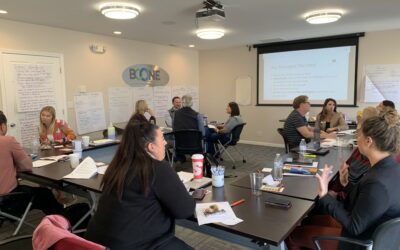How to Reach Consensus on Your Strategic Plan
We are continuing our blog series on strategic planning by focusing on Step 3 of our 4 Step Strategic Planning Process: Facilitate Consensus. Read more about our previous strategic planning blogs in this series here, here, and here. The main purpose of this third step is for the strategic planning team to start to reach an agreement about the future direction.
Organizations will often form strategic planning committees or task leadership teams to complete their strategic plan. This means that different types of people with various perspectives and insights will have to learn to work together on a common goal. We actually encourage collaboration and engagement in the strategic planning process and discuss it more in Step 1 in this blog.
After you have formed your planning team and gathered some critical information about the organization, your targeted clients, and your community you are now ready to come together to reach a consensus about the future. The following five recommendations will help your team reach a consensus:
-
- Issue Homework – Prepare a packet of information that summarizes all of the data and information that has been collected. Most likely there will be some important information that would be helpful for the group to read in advance of coming together. We like to package that information into an “Organizational Analysis and Needs Assessment” report and slide deck presentation (see more here).
- Host Planning Sessions – Set aside time for the planning team to come back together once all of the information has been gathered. Depending on your planning team’s availability, this may need to be broken out into a couple of sessions. Read more about facilitating a planning retreat here.
- Facilitate Group Discussion – If your budget allows, it is very helpful to have a consultant (ahem, TCG!) facilitate your planning discussions. This way all members of your team can engage in the discussion. They are also equipped with adult learning strategies and can design a highly engaging and interactive process for your team.
- Focus on the “What” First – We often see many planning team members who want to jump into the strategies and problem-solve the needs/ gaps identified. The first step in consensus building is to reach an agreement on the “What” you want to accomplish. We call this setting your big goals and top areas of focus. We also try to limit our clients to 3-5 big goals/ focus areas. Once you have this set, then you can get into the “How” you will accomplish your goals through strategies.
- Take the Temperature – As you are moving through this process, it is important to check in with your planning team at these meetings and maybe even afterward. You want your planning team to be confident in the agreements that have been made and not have any ill feelings toward team members. While not everyone may get what they think is important, everyone should be in collective agreement about the plan. During these planning sessions, your consultant or team lead should check the non-verbal and verbal cues of team members throughout the process and respond as needed.


By the end of Step 3, facilitating consensus, your team should feel excitement and enthusiasm about the possibilities for the future and the plan! If not, that might be an indicator that the consensus is not there with the whole group. In that case, you may need to come back together and have an honest discussion.
A strategic plan is not something to take lightly or go through the motions. It can set the path for the future of an organization and help bring about transformational change. When you take the time and effort to follow these five recommendations, your organization will be on its way.
If you are ready to start your strategic plan, contact us. We would love to support the organization’s strategic planning needs.





